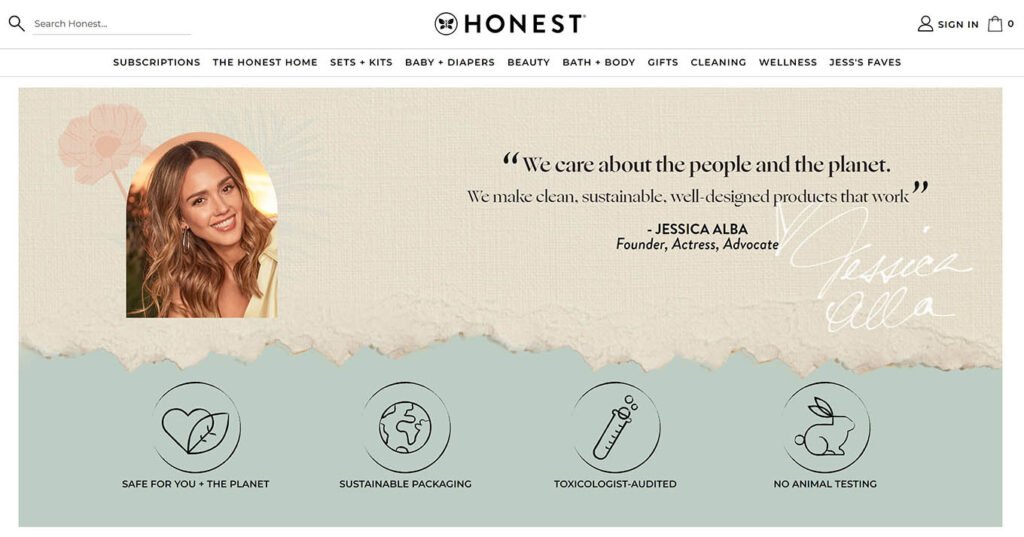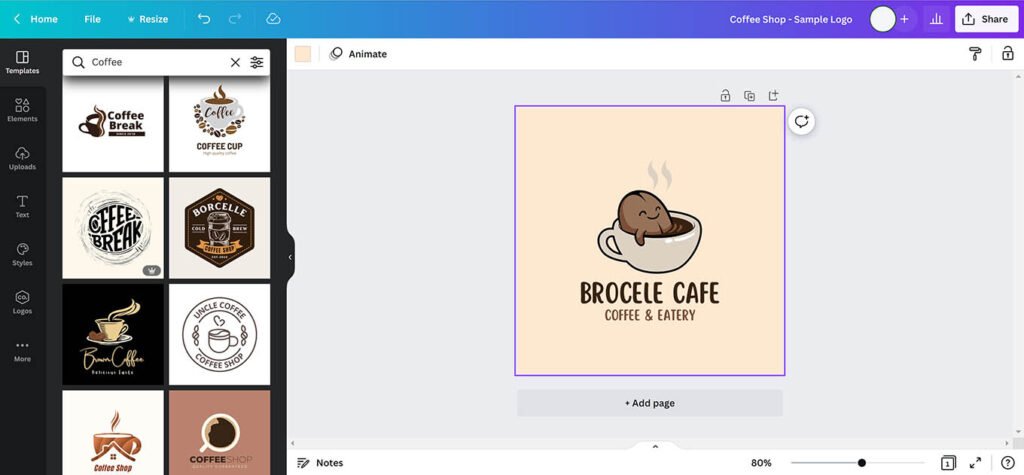Stephen King once said, “A product can be quickly outdated, but a successful brand is timeless.” This insight is a great reminder that brands are so much more than just the products or services they offer. A brand is the sum of everything your company represents – and the key to a lasting, successful business.
Despite the product-centric focus of famous entrepreneurs like Steve Jobs and Elon Musk, branding played a pivotal role in the success of many of the world’s largest businesses. In fact, both Apple and Tesla have some of the most loyal and passionate brand advocates.
To understand what it takes to craft a strong brand identity, this post will explore the basics of branding. We’ll cover the what, why, and how of brand strategy, and offer actionable tips for building a powerful brand.
What is a brand?
A brand is the identity of a company, product, or service. It is the face that the public sees and interacts with. A strong brand is easily recognizable, has an emotional connection with its audience, and is consistent across all touchpoints.
In a digital age where the average person is bombarded with thousands of ads per day, it is more important than ever to develop a brand that can cut through the noise. But building a lasting brand identity is not something that can be done overnight.
This is because a brand is more than a logo, tagline, or mood board. Creating a brand is about shaping the perception of your target audience so they see you as the solution to their problem. It’s about defining who you are, what you do, and why you do it in a way that draws in a community of people who will champion your business cause.
Key benefits of effective branding
When you think of your favorite brands, what comes to mind? Chances are, it’s not just the custom logo or the product that you think of, but the overall feeling that the brand evokes. This is the power of a successful brand.
If your company can capture the imagination of your target audience and create emotional connections with customers, the benefits are numerous:
- Greater credibility
- Increased name recognition
- Pricing power
- Customer loyalty
- Accelerated growth
- Higher employee satisfaction
These advantages provide strong brands with a tremendous competitive edge relative to other businesses. This invaluable asset, known as brand equity, can be the difference between a successful company and one that languishes in the marketplace.
How to define your brand strategy
Before creating your brand’s visual identity, it’s critical to first establish the foundation of your brand strategy. This process begins with research.
Dig into your target audience, your direct competitors, and even your product substitutes. Try to hone in on your relative positioning in the marketplace, and outline what your value proposition will be.
From there, envision who your brand will attract and create an ideal customer profile. This high-level buyer persona will not only help you determine the messaging and content of your marketing but also inform the overall look and feel of your brand.
Now, think about what kind of emotional reaction you want your brand to evoke. Write down the adjectives you want people to use when describing your company and start to form an identity. Remember that this personality will serve as the basis for the visuals you create, and should reflect the preferences of your target market.
At this stage, you should be able to answer the following questions:
- Who are we?
- What makes us different?
- Why do our customers choose us?
- How do we make people feel?
Armed with these answers, write down a complete positioning statement. Think of this as your brand’s angle. What unique value will you provide? What will you do better than your competitors? And what will your customers value most?
If necessary, you can use surveys, interviews, or social media listening to drum up these types of insights. But in many cases, these differentiators may be the original purpose of your business.

For example, the Honest Company, Jessica Alba’s consumer goods brand, was created in response to the lack of safe and natural baby products on the market. This central idea permeates all aspects of her business, from product quality and packaging to the company’s core values and vision.
Building a lasting brand identity
With your positioning statement or brand thesis in mind, it’s time to bring your ideas to life and convert text into feelings. Through each of the following steps, the goal is to translate the essence of your brand into a tangible visual representation.
Mood board
Although many small business owners jump straight into logo development, it’s important to first establish the overall look and feel of your brand. This can be accomplished with a simple mood board.
A mood board is a visual representation of the style, colors, textures, and imagery you want your brand to evoke. To create one, start by collecting images from the web or your personal files that you feel fit the tone of your brand. Then, lay them out in a collage-like format to get a sense of the overall aesthetic.
If you’re you’re having trouble getting started, there are plenty of resources available online to help jumpstart the process. Behance and Pinterest are both great places to look for visual inspiration, or you can use a mood board template in Photoshop. The point is to start experimenting with the visuals and get a feel for the direction you want your brand to go in.
Color palette

The colors you choose will play a big role in your brand’s personality. When narrowing down the options, consider the psychology of color and how different hues can affect the way people perceive your business.
For example, red is often associated with excitement and energy, making it a good choice for brands in the retail or restaurant industry. Blue, on the other hand, is often seen as trustworthy and reliable—two qualities that are important for companies in the financial sector.
Once you’ve selected a few colors that fit the personality of your brand, it’s time to start thinking about how to use them. A color palette can be an incredibly helpful tool in this regard, as it provides a set of guidelines for the shades you should use in your branding.
When creating a color palette, it’s a good idea to start with a primary color—this will be the shade you use most often. Then, choose a secondary color to use as an accent, and one or two tertiary colors for added depth and variation.
There are a few different ways to go about finding the perfect colors for your brand. You can use a color matching tool like Adobe Color, test out Canva’s color palette generator, or make your own from one of your mood board images.
Typography
Like colors, typefaces are one of the basics of branding. As such, the next step is to choose the fonts you want to use across your marketing materials, website, and social media platforms.
When selecting fonts, consider the tone you hope to convey. For example, if you want to create a sense of sophistication and elegance, you might choose a serif font like Garamond or Baskerville. If you’re going for a more modern look, on the other hand, you might opt for a sans-serif font like Helvetica or Futura.
Logo
Your logo is one of the most visible elements of your brand identity—it is often the first thing people see, and it will be used on all of your marketing materials. That’s why it’s important to take the time to create an emblem that is both visually appealing and reflective of your vision.
There are a few ways to approach logo design, but the simplest method is to start with a wordmark. A wordmark is a stylized version of your brand name, and it can be an effective way to make your business memorable.
If you want something with a little more visual interest, you can try creating a symbol or icon to represent your brand. This can be anything from a simple geometric shape to a more complex illustration. Canva has a wide range of logo icons and templates that you can use as a starting point.

Once you have the basic elements of your logo in place, start experimenting with the details. This includes things like the colors, font, spacing, and arrangement of your design.
Messaging
Also referred to as voice or personality, messaging is the way that you communicate your brand. This includes the language you use to reach consumers, the tone of your marketing materials, and the overall feel of your online presence.
When developing your messaging, reflect on the values of your business and the way you want customers to perceive you. Do you want to be seen as friendly and approachable, or serious and professional?
Although this is but one aspect of your business, be sure that your brand values and branding strategy come together in a unified way. This will make sure that the message you send customers is consistent and clear, and that your audience knows exactly what to expect from your business.
Tagline
Using your brand voice, develop a simple tagline that encapsulates the essence of your business. This should be something memorable that can stand on its own without the rest of your branding. Your tagline can be anything from a short phrase to a single word, but it should be easy for people to remember and identify you with.

If you hear the phrases “just do it” or “I’m lovin’ it” you automatically think of Nike and McDonald’s—that’s the power of a good tagline. So take the time to brainstorm and come up with a catchy message that you can consistently use when advertising your product or service.
Design standards
After you create a brand, design standards can help you maintain a consistent identity across teams, platforms, and marketing campaigns. The key is to document the common elements of your brand—including the colors, fonts, logo, messaging, and tagline—so that everyone who works on your behalf knows how to use them.
One way to do this is to create a brand style guide. This document should include the basic principles of your brand identity, along with specific instructions on how to apply them. You may also want to outline your brand values, mission, and vision. Then, you can share one complete document with your in-house team, outside agencies, and freelance contractors.
How to reinforce your branding strategy
With the basics of branding behind us, let’s take a look at some of the ways you can keep your strategy top-of-mind and continue to reinforce your identity.
Honesty
In the era of social media and the 24-hour news cycle, customers are more informed than ever before. They can quickly see through marketing ploys and advertising gimmicks, so it’s important to be truthful in your branding. Don’t make false claims or exaggerate the benefits of your product—just be honest about what you’re offering, and let the quality of your work speak for itself.
Consistency
Consistency is essential when it comes to branding. Some of the most recognizable brands have been built over the course of decades (if not centuries), by delivering the same message to customers and providing consistent service.
Integration
Your branding strategy should be integrated into every aspect of your business, from the way you answer the phone to the design of your packaging. By aligning all touchpoints with your brand identity, you can reinforce the message you’re trying to send and leave a lasting impression on customers.
Final thoughts
Now that you understand the basics of branding, you can start to develop your own strategy. Just remember to be honest, consistent, and integrated with your approach, and you will be well on your way to building a strong, recognizable brand.
If at any point you feel stuck, look for inspiration from competitors and other companies in the Facebook Ad Library. Or, hire a design agency to help you through the process. Creating a strong brand doesn’t have to be complicated—just focus on the basics!
Branding strategy FAQs
Effective branding helps to attract new customers, inspire employee loyalty, and boost revenue. By creating an emotional connection with your target market, you can increase the perceived value of your products or services and charge a premium price.
A brand strategy outlines the plan for how a business will position its products and services in the market, and differentiate itself from the competition. This strategy should be based on both external research and internal values. Ultimately, these efforts come together in the form of a brand identity, which includes visual elements like a name and logo as well as the ethos of the brand.
The telltale signs of a good brand are authenticity, customer-first focus, and a strong identity. Good brands also have a clear understanding of their target market and how to align with their customer’s lifestyles. These businesses know what they stand for and are able to communicate that message in a consistent and compelling way.



